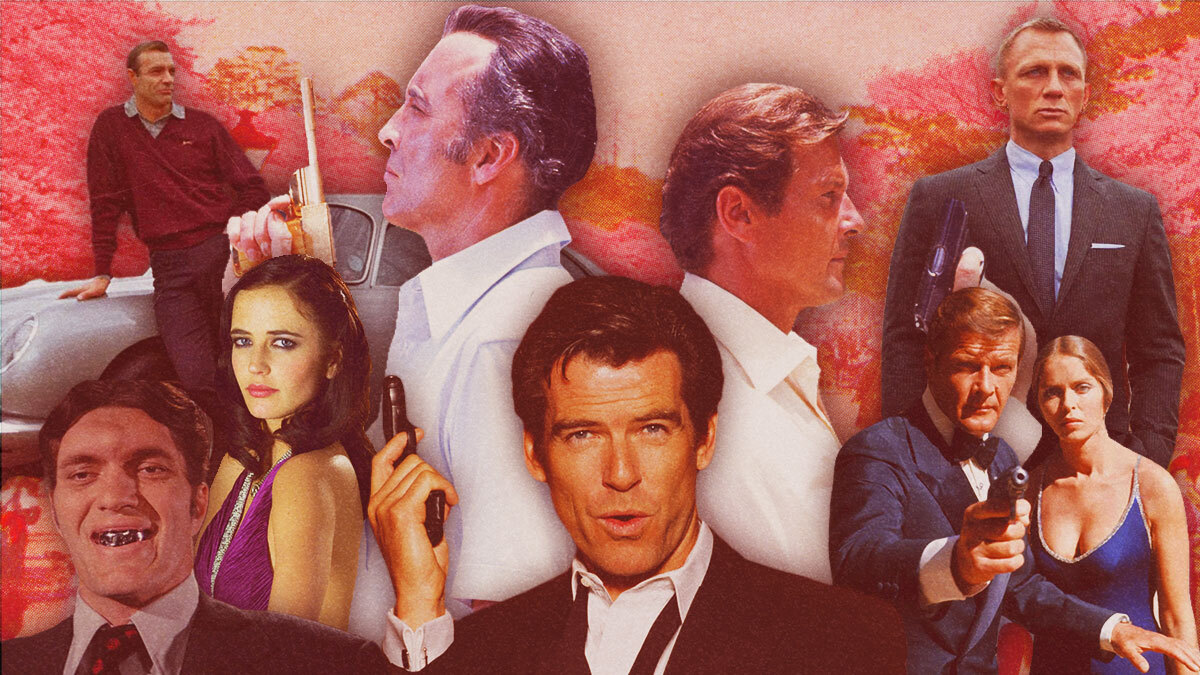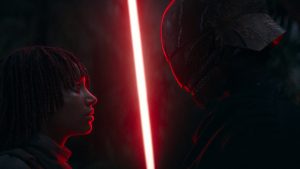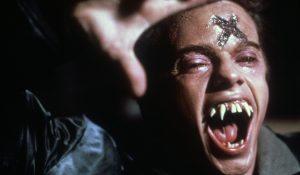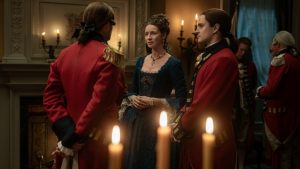
For the past several years, seeing all James Bond movies streaming online in one place has been a rare occurrence. With certain films hopping from HBO Max to Paramount+, and sometimes even Netflix, keeping track of how to make a 007 marathon happen has been tricky. That is until now. As of October 2024, all 25 James Bond movies released by Eon Productions—from 1962 to 2021—are streaming on Amazon Prime Video.
Amazon has declared Prime Video “the Home of Bond,” which means that maybe, just maybe, Mr. Bond will sit still this time and not move to another streaming platform for a bit. Oct. 5 is also “James Bond Day,” because it celebrates the release of Dr. No in 1962. So for James Bond Day, you might consider planning a marathon, or at least, putting together a watchlist for yourself. But in what order should you watch the James Bond movies? Is there one approach or many? How can you select James Bond movies that even make sense with each other?
We have some ideas. Here are six different watch orders for the James Bond movie franchise–including shout-outs to the two unofficial Bond movies not found on Amazon, the 1967 spoof Casino Royale and the off-brand Connery Bond, 1983’s Never Say Never Again. Not every Bond movie is on every watch order, but we think one of these lists will give Bond fans, and Bond-curious viewers alike, exactly what they’re looking for. And, in case this is your first time delving into the world of 007, all serious spoilers are excluded!
All 25
If we’re sticking to the “official” James Bond movies released by Eon Productions, starting in 1962 with Sean Connery in Dr. No, then the easiest James Bond watch order is simply to watch all 25 films in the order of their original theatrical release. This would mean that you’d start with Dr. No (1962) and simply go forward in time.
From a cultural and historical point of view, this approach has one obvious benefit. You can learn about the entire history of the world from 1962 to 2021 through 007 flicks. It’s not a holistic education, but the sieve through which the Bond franchise processes culture at large is fascinating and shocking. As composer Hans Zimmer said in the 2023 documentary The Sound of 007, “Bond, in his own way, has more to do with our culture than people will ever probably admit.” Watching the films in chronological order will prove Zimmer’s point utterly correct.
This watch order is easy, it’s just the movies in chronological order, which would look like this:
Dr. No (1962)
From Russia With Love (1963)
Goldfinger (1964)
Thunderball (1965)
You Only Live Twice (1967)
On Her Majesty’s Secret Service (1969)
Diamonds Are Forever (1971)
Live and Let Die (1973)
The Man With the Golden Gun (1973)
The Spy Who Loved Me (1977)
Moonraker (1979)
For Your Eyes Only (1981)
Octopussy (1983)
A View to a Kill (1985)
The Living Daylights (1987)
Licence to Kill (1989)
GoldenEye (1995)
Tomorrow Never Dies (1997)
The World is Not Enough (1999)
Die Another Day (2002)
Casino Royale (2006)
Quantum of Solace (2008)
Skyfall (2012)
Spectre (2015)
No Time To Die (2021)
The Funny Bond Order
Starting with the Ian Fleming novels in 1953, critics have always pointed out that there’s an element of self-parody, or at the very least hyperbole embedded in the Bond books. For haters who want to say that James Bond stories are silly, those who love James Bond will gladly tell you that silliness is part of the cocktail from day one. As Roger Moore said, “My attitude is that he’s sort of a ridiculous hero.” So if you’re looking to enjoy yourself watching James Bond films—rather than feel like you’re doing movie homework—it might be best to embrace the over-the-top nature of James Bond, and in that criterion, find some clue as to why the franchise is so beloved.
With that in mind, here are the silliest Bond movies to watch in chronological order of uproariousness.
You Only Live Twice (1967): Sean Connery flies a tiny helicopter. Blofeld hides rockets in a volcano.
Casino Royale (1967): Spoof film directed by Peter Sellers. Multiple James Bonds. Packed with jokes Austin Powers would later steal.
Live and Let Die (1973): Roger Moore jumps on alligators. Corkscrew-sound-effects when cars are in the air. More puns than you can imagine.
Moonraker (1979): Bond in space. ‘Nuff said.
Octopussy (1983): The title tells you everything, but also Bond is literally dressed as a circus clown in the climax.
Never Say Never Again (1983): Connery’s unofficial comeback film. Rowan Atkinson (pre-Johnny English, and Mr. Bean) is constantly tripping. The fate of the world depends on winning a fancy holographic Battleship knockoff video game in a casino.
A View to a Kill (1985): Christopher Walken and Grace Jones actually say the name of the movie in the movie in the most hilarious and unnatural way possible. It doesn’t get sillier than this.
Die Another Day (2002) Lots of surfing. Madonna gives sword lessons. Pierce Brosnan drives an invisible car.
The Serious Bond Order
When all is said and done, Jame Bond movies are technically action movies about a guy who kills people for his government. So there’s a certain earnestness to the basic concept of Bond that can, and often does, produce serious stories that ruminate on the nature of life and death. Bond is both complicit in the ills of the world while also fighting to save it. But, in saving the world, it sometimes feels like Bond is breaking even. And some of the best films make Bond deeply aware of this. If you’re looking to feel like watching Bond films says something important and relevant about human nature, or at the very least, you want an action flick that feels realistic-ish, these are your missions.
From Russia With Love (1963): Everything in the movie is actually focused on getting a Russian decoder and figuring out who can be trusted and who can’t. It doesn’t remotely approach John le Carré levels of realism, but this is a Bond movie that is actually about spies and spying. Plus, Sean Connery is pretty mean in this one.
The Living Daylights (1987): No “serious” Bond list can be complete without Timothy Dalton’s debut film. While the ending of this one feels dated and a little discordant with today’s current geopolitical landscape, the film nonetheless made it clear that this was a movie about an assassin on a mission.
Licence to Kill (1989): The brutal maiming of Felix Leiter sends Bond on a revenge mission. Timothy Dalton only smiles when he’s trying to make drug lords think he’s cool.
Casino Royale (2006): Daniel Craig reboots the franchise. In the opening scene, he kills a guy in a bathroom with his bare hands. Later, when he’s tortured by Mads Mikkelsen, it’s somehow one of the lighter moments of the film.
Quantum of Solace (2008): A direct sequel to Casino Royale, Bond is out for blood and pisses off everyone he knows, including people trying to help him. Nobody is laughing.
No Time to Die (2021): Despite a few silly gizmos and zippy one-liners, Craig’s swansong is easily the most earnest Bond film of all time. The ending is part of the reason why, but the 20-minute pre-title sequence tells you everything you need to know about the overall vibe: this is a serious deconstruction of James Bond and everything he does (and doesn’t) stand for. Clearly, with three of Daniel Craig’s five movies on this list, you can see a pattern: Craig’s era has been the most down-to-earth and self-aware of any previous Bond, ever.
The Fleming Purists Order
While the number of Bond fans who discovered the franchise through the books first is a vanishingly small portion of the global population, none of this would exist without Ian Fleming sitting down at a typewriter.
“I had finished killing fish,” Fleming wrote, reflecting on Feb. 17, 1951, the day he seemingly began writing Casino Royale, the first Bond novel. “I decided it was now I should start killing a few humans—on paper anyway.”
This sardonic way of seeing the world; a bit of whimsy mixed with shocking cruelty pervades nearly all the James Bond books and arguably is what makes the character and the stories so unique, for better or for worse.
Fleming never saw himself as an artistic literary giant, and neither did his friends or critics. But what was on the page mattered, and if you’re trying to get a sense of James Bond, as conceived by his creator, some of the films come very close. Here’s the watch order Fleming would have approved of. Which, strangely, creates the most-well-rounded Bond education of any of the lists.
Casino Royale (2006): Although updated for the 21st century, this film follows the basic plot of the first book fairly closely, including a strange anti-climax at the end of the second act and a devastating twist at the end. This is how Bond begins, and some of the film’s more bracing, unflinching lines come straight from the novel.
Dr. No (1962): Technically the sixth novel, the first James Bond film also sticks pretty close to the events of the book, though arguably improves upon the climax. The grittiness of some of the books translates perfectly here.
From Russia With Love (1963): One of John F. Kennedy’s favorite books, the film version is extremely close to the novel, including the last-minute moment when Bond believes he’s safe, only to be proven that you can never really get away from your enemies.
Goldfinger (1964): In the book, Goldfinger is a bit scarier and the golf game is longer, but the essential details are pretty much the same. The movie actually improves a bit on the novel’s plotting, making Bond’s earliest encounter with Goldfinger less of an accident. Overall, the movie is better than the book while also honoring it extremely well.
Thunderball (1965): Infamously, Fleming collaborated with Kevin McClory for the basic story idea of this book, which would later lead to all sorts of legal troubles for the franchise for years to come. Unlike Goldfinger, the movie version of Thunderball isn’t better than the 1961 novel, but the story is intact. We start with Bond at a health spa and end up in the Bahamas with Bond frantically searching for stolen nuclear warheads. Fleming loved swimming and hunting underwater game. Bond movies with wetsuits and flippers are, therefore, very often close to the author’s original interests.
On Her Majesty’s Secret Service (1969): George Lazenby’s one and only outing as James Bond is also fairly close to the book. Specifically, the idea that Bond falls in love with Tracy (Diana Rigg), and then, at the end of the movie, has to deal with the consequences of trying to have a normal life.
License to Kill (1989): While it’s tempting to include the 1981 Roger Moore flick For Your Eyes Only on this list, it really wasn’t until 1989 that the franchise used major plot elements from the Fleming short stories and novels to round out the plot. The second and final Timothy Dalton outing in which Bond goes rogue (gasp!) combines certain elements from Live and Let Die with the basic plot setup of the short story “The Hildebrand Rarity.” Plenty of sea creatures and water in this one.
The Post-Cold War Trilogy
After Dalton’s era, and the brave new world of the 1990s, Bond’s place on the shifting geopolitical scene was unclear. If 007 wasn’t trying to thwart the Russians—even by proxy—what was his role? The answer to this question, as well as an emphasis on real questions of international warfare and its prevention, were unpacked in Pierce Brosnan’s first three Bond films. This was the moment when the franchise invited the audience to think of Bond as “a relic of the Cold War,” as Judi Dench’s M puts it. But also a relic that perhaps has some usefulness left in him.
If you want to get a sense of Bond transitioning out of the Cold War, and also three fairly good Pierce Brosnan movies, your watch order is:
GoldenEye (1995): The first Pierce Brosnan film, and a major shot in the arm for the franchise. Sean Bean stars opposite as Alec Trevelyan, formerly 006, a brother-in-arms to James Bond. Judi Dench’s first appearance as Bond’s boss “M,” a concept and performance so good the franchise kept her in this role for the Daniel Craig era, even though that continuity was completely different.
Tomorrow Never Dies (1997): An underrated 007 film in which Bond has to deal with the manipulation of media coverage as it threatens to escalate a major international war. Brosnan teams up with Michelle Yeoh as Chinese secret agent Wai Lin. The stunts are incredible, but Bond making personal peace with a Communist enemy tells another, more subtle story.
The World Is Not Enough (1999): Another underloved Brosnan film, the setup of which is nearly identical to 2012’s Skyfall. After MI6 headquarters is bombed, M suspects there might be a personal connection. The focus here is all about oil and who controls it along the post-Soviet states corridor, with Bond realizing that capitalism is a weapon wielded as much by his foes as by his friends.
Only the Good Ones
Perhaps unsurprisingly, a lot of good Bond movies will feel like other good Bond movies. With Goldfinger in 1964, the franchise introduced certain recurring formulas and motifs and worked so well that they shaped the films that followed. In a sense, the tension of Bond films can be felt when the franchise either moves toward what audiences expect or away from those Bond-ish impulses. And yet, when 007 movies hit the sweet spot between originality and familiarity, the result isn’t just a good Bond flick, but a good movie in general.
If you don’t want to overthink your Bond watchlist too much, you can stick with a watchlist that only covers the films that everyone agrees are good. So this order is for everyone’s eyes only.
Goldfinger (1964): A classic. The quintessential Sean Connery Bond film and the moment the franchise reinvented itself. Funny, exciting, and original all at the same time.
The Spy Who Loved Me (1977): The best Roger Moore Bond film by any metric. Bond drives a Lotus Esprit off a pier and converts the car into a submarine. Barbara Bach stars opposite as Russian agent XXX, and everyone is having the time of their lives. As Carly Simon sings in the opening theme song, nobody does it better.
GoldenEye (1995): A great spy movie. A great ‘90s movie. A great Bond movie. GoldenEye famously spawned the popular N64 video game of the same name, but the film is just as enduring. Pierce Brosnan was never better than this.
Casino Royale (2006): Have you gotten the sense you need to see Daniel Craig’s first Bond movie to understand good Bond movies? Yes, this movie is on nearly all the watch lists for good reason. An impeccable thriller that will convert even non-Bond people into fans overnight.
Skyfall (2012): Possibly the best James Bond movie of all time, this film does it all. Great action and beautiful globe-trotting, but also a grounded story about Bond and his sense of place in the world. Judi Dench gives the performance of a lifetime, and by the end, there’s not a dry eye in the house. Despite reusing elements from previous films and somewhat obvious fan-service iconography, Skyfall still feels startlingly original. If you never watched another Bond movie after this one, it would be a bummer. But you’d also understand the entire franchise.
All 25 “official” EON Productions James Bond films are streaming now on Prime Video.
The post The Best James Bond Movie Watch Orders for Your Next 007 Binge appeared first on Den of Geek.




